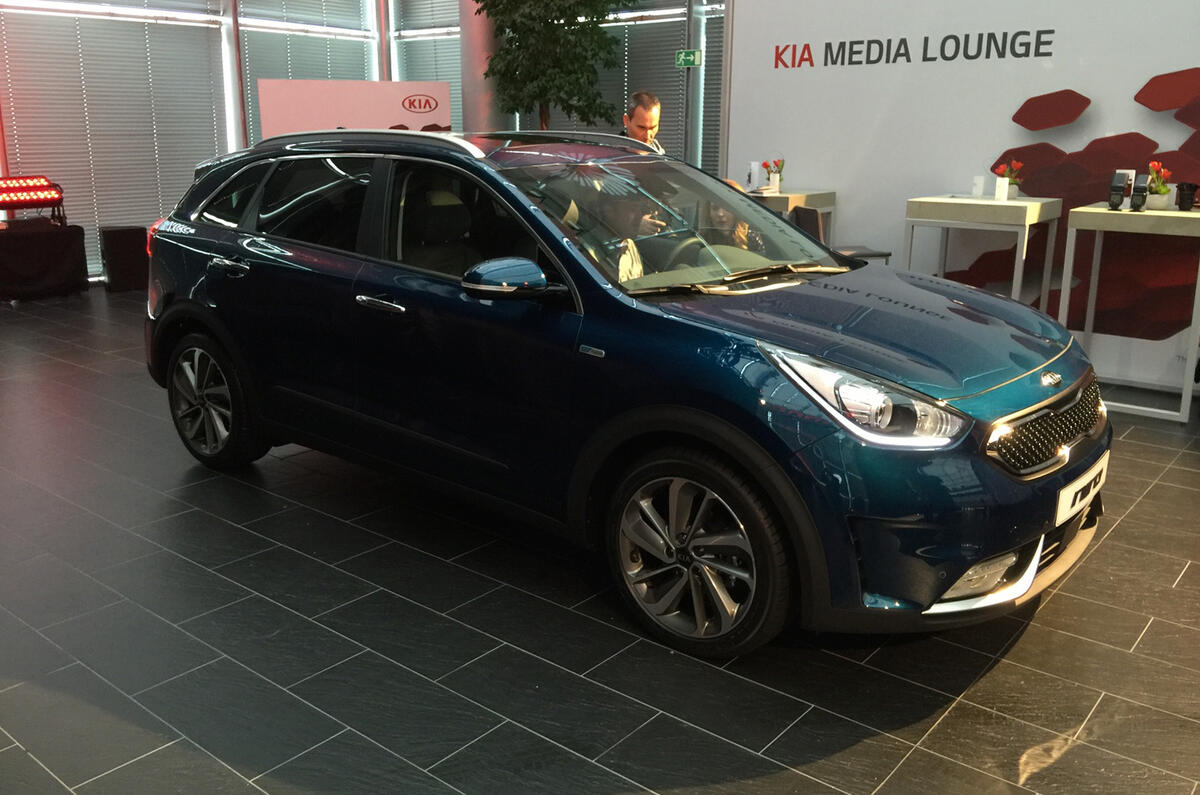The new Kia Niro petrol-electric hybrid that will kickstart the next stage of the Korean manufacturer’s green car strategy has been unveiled at the Geneva motor show.
Billed by its maker as a ‘Hybrid Utility Vehicle’ - which essentially means it combines crossover looks with hybrid technology – the vehicle is part of Kia’s aim to increase its green car line-up from four cars to 11 by the end of this decade.
First revealed at the recent Chicago motor show, it is the first Kia product to make use of a new platform specifically for hybrid and plug-in hybrid vehicles that’s been developed for use by parent firm Hyundai.
The Kia Niro occupies a new space within the brand’s model line-up in terms of its size. The Niro is 4355mm in length, 1800mm wide and 1535mm tall, with a wheelbase of 2700mm, making it smaller overall than the all-new Kia Sportage, though occupying a larger footprint than the Cee’d hatchback.
At the heart of the Niro’s power supply is a new 1.6-litre four-cylinder petrol engine that has been engineered specifically for hybrid applications.
Click here to read our full review of the Kia Niro
The 102bhp engine maximises efficiency by combining the Atkinson Cycle, cooled exhaust gas recirculation (EGR), direct injection and when Kia calls a “long-stroke-narrow-bore specification”. An exhaust heat recovery system speeds the engine’s warm-up by routing coolant to a heat exchanger in the exhaust system.
A transmission-mounted 32kW (43bhp) electric motor is powered by a 1.56kWh lithium ion polymer battery and works in tandem with the petrol engine to produce a total of 139bhp and 195lb ft of torque.
Kia says the battery pack, which weighs 33kg, is the “lightest and most efficient” used by the manufacturer to date and it features an brake energy regeneration system.
Fuel economy and CO2 emissions have yet to be officially ratified, but Kia engineers are targeting a CO2 output of 89g/km for the Niro.
The power is fed to the front wheels via a six-speed dual-clutch transmission (DCT). The transmission also offers a manual shifting mode.
To minimise noise, vibration and harshness, the Niro is fitted with specially designed engine mounts, equal-length driveshafts, and a damper inside the steering wheel hub to minimise vibrations felt in the steering wheel. Other NVH measures include a special embossed foam under the carpet, and a dense insulating pad underneath the bonnet also dampen noise.
























































































Add your comment